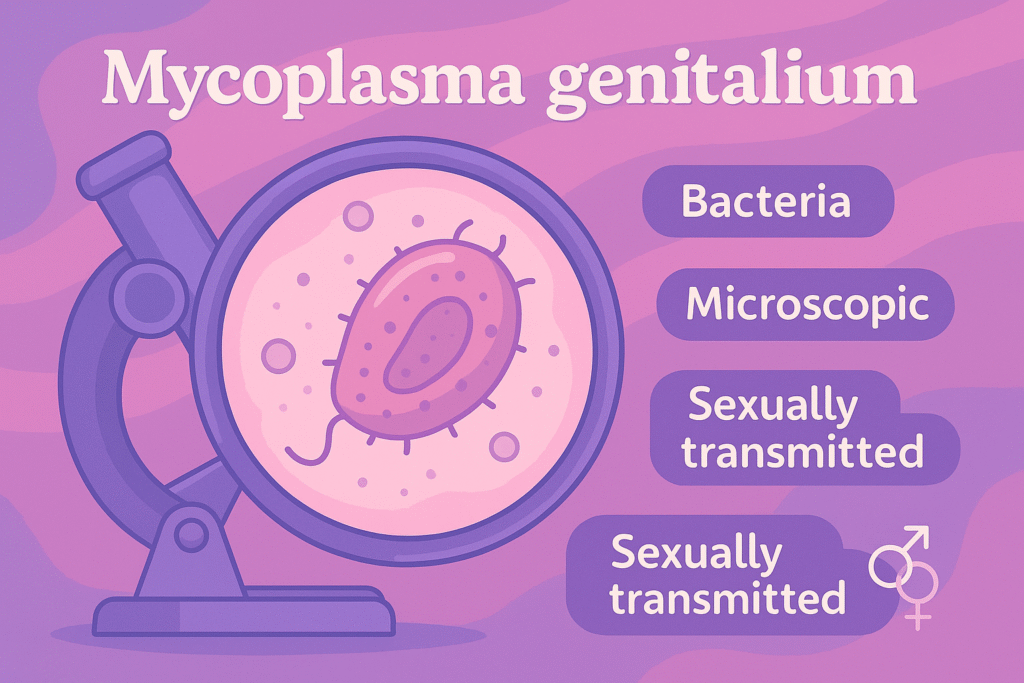
How to test for Mycoplasma Genitalium
If you’ve never heard of Mycoplasma genitalium (MG), you’re not alone. This emerging sexually transmitted infection is far less well-known than chlamydia or gonorrhea — yet it’s becoming increasingly common in Europe, North America, and Australia.
The tricky part? Its symptoms are often mild, vague, or mistaken for other conditions, meaning many people carry it without knowing. This guide breaks down MG in plain language, including how to spot it, how it’s tested, and why accurate diagnosis matters.
What Is Mycoplasma genitalium?
Mycoplasma genitalium is a bacteria that infects the urinary and genital tracts. First discovered in the 1980s, it’s now recognised by health authorities like the CDC and NHS as a major cause of non-gonococcal urethritis (NGU) in men and cervicitis in women.
How Do You Catch It?

MG spreads through unprotected vaginal, anal, or oral sex with an infected partner. Condoms reduce (but don’t eliminate) the risk.
You can’t catch MG from toilet seats, casual contact, or sharing cutlery.
Symptoms of Mycoplasma genitalium

In Men
- Burning or stinging during urination
- Discharge from the penis (clear or cloudy)
- Discomfort after ejaculation
- Inflammation of the urethra (urethritis)
In Women
- Unusual vaginal discharge
- Pain during sex (dyspareunia)
- Bleeding between periods or after sex
- Pelvic discomfort
- Cervicitis (inflammation of the cervix)
Important: Around 50–60% of cases are asymptomatic, meaning you could have MG without knowing it.
Why It’s Often Misdiagnosed
MG’s symptoms are almost identical to other infections like:
- Chlamydia
- Gonorrhea
- Bacterial vaginosis (BV)
- Ureaplasma
- Urinary tract infections (UTIs)
Since MG isn’t part of most routine STI screens, doctors might treat symptoms with standard antibiotics — which don’t always work against MG, especially with rising antibiotic resistance.
How is Mycoplasma genitalium Tested?

The gold standard test is a NAAT (nucleic acid amplification test) — the same type of test used for chlamydia.
Testing methods:
- Men: First-catch urine sample
- Women: Vaginal or cervical swab
Tip: If your symptoms persist after treatment for chlamydia or gonorrhea, ask your healthcare provider to specifically test for MG.
Treatment & Antibiotic Resistance

MG is tricky to treat because it’s resistant to many common antibiotics.
- First-line: Doxycycline (reduces bacteria load) followed by azithromycin or moxifloxacin (depending on resistance profile).
- Avoid self-medicating — incomplete or wrong antibiotics can make MG harder to treat.
Prevention Tips

- Use condoms with new or casual partners
- Get regular STI screenings if sexually active
- Avoid sexual contact until both you and your partner have been treated & retested
When to See a Doctor
Seek medical advice if you experience:
- Persistent discharge or genital discomfort
- Pain during urination or sex
- Bleeding after sex (women)
- Symptoms returning after treatment
Key Takeaways
- MG is an underdiagnosed but increasingly common STI.
- It can mimic other infections, so targeted testing is essential.
- Early diagnosis and correct treatment prevent long-term complications like pelvic inflammatory disease (PID) and infertility.
10 Common Sex Myths You Need to Stop Believing

Busting 10 common sex myths in 2025. Learn the truth about pleasure, consent, STIs, and intimacy so you can enjoy safer, healthier sex. IntroductionSex is surrounded by stories, “advice,” and myths that just won’t die. Unfortunately, many of these misconceptions can lead to confusion, anxiety, or even unsafe practices. In 2025, it’s time to clear…
How to Ask for Consent With Confidence (Scripts Included)

Consent isn’t just a formality — it’s the foundation of trust, respect, and better intimacy.Yet many people still feel nervous asking for it, worrying it might “kill the mood.” The truth? Clear communication makes intimacy smoother, sexier, and safer. In this guide, you’ll learn how to ask for consent confidently, plus real-world scripts you can…




